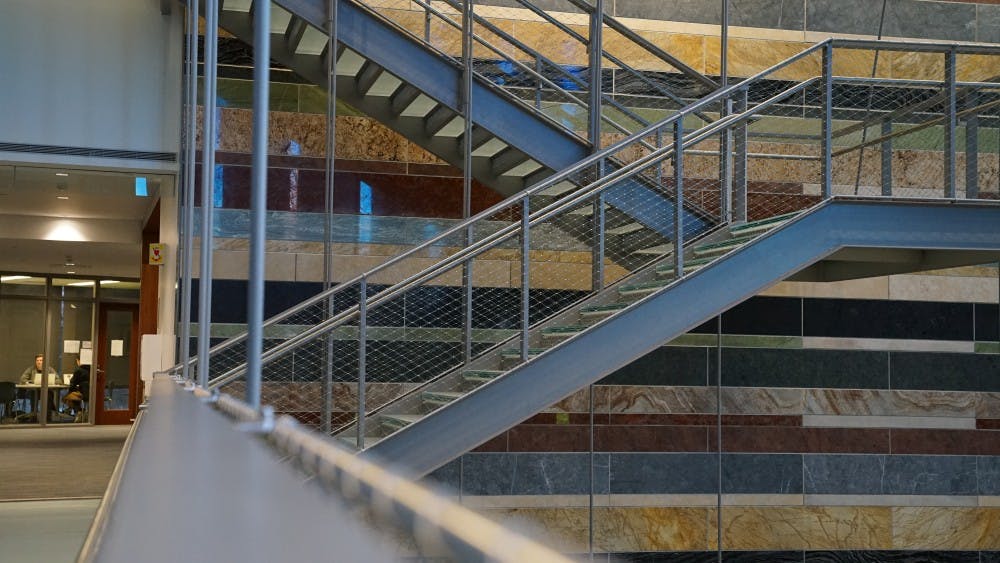In the atrium of the Global and International Studies Building, just behind the three-story staircase, is a multicolored wall with bold stripes of mismatched stones.
Taking a closer look, one can see the inscriptions of names of numerous countries, such as Brazil, Australia, China, Angola, Serbia, Italy, Spain and Israel.
“It gives a strong sense of place,” said Dean Lee Feinstein, a former ambassador to Poland and the current dean of School of Global and International Studies. “I do hope it gives a sense of connection and sensibility, keeping students curious and engaged when understanding other cultures.”
The Global and International Studies Building, or GISB, opened in late 2015 and was inaugurated by John Kerry, the former US Secretary of State. Susan Rodriguez, a design partner from New York-based architectural firm Ennead Architects, facilitated the construction of the building.
The Stones of the World on the wall face east and include stones from 10 different countries and six continents.
Feinstein said the wall maintains the limestone tradition of IU buildings as a tribute to south-central Indiana’s geological significance.
And the colors on the wall of stones help to add color to the atrium, Feinstein said.
The wall is visible from outside of the building through its glass. The pattern is also present in several different areas throughout GISB.
The wall possesses a reference to the General Assembly of the United Nations, giving a nod to the background of green marble walls behind the world’s most influential leaders at the UN headquarters in New York City.
“It refers to the aspirations of the UN, its goals and its ideals,” he said.
Feinstein also mentioned the wall’s tribute to IU and its continued commitment to global studies that blossomed under former president Herman B Wells.
This commitment to global communication has continued under President McRobbie, who presided over the dedication of the GISB in 2015, Feinstein said.
International involvement has been an integral part of IU’s history for more than a century through the instruction of language and study abroad opportunities. IU now offers courses in over 50 foreign languages.
The significance of the stones is also meant to extend to students in a more personal way. Since the atrium is used for both studying purposes and formal events, Feinstein said he hopes students will associate the wall with their educational development at IU.
Feinstein said the wall of stones is a great tribute to University leadership, trustees, the state of Indiana and the goal to not only accommodate students seeking global education, but to also provide a meaningful and thoughtful environment in which students can grow.
“It shows the impact architecture can have on learning and shaping education,” he said.




